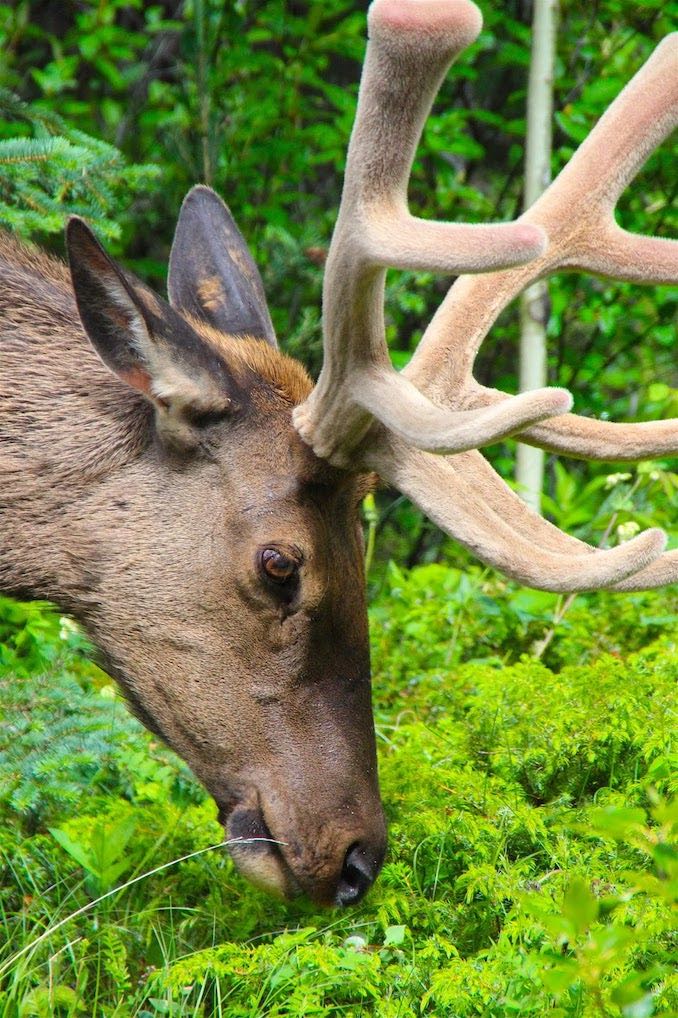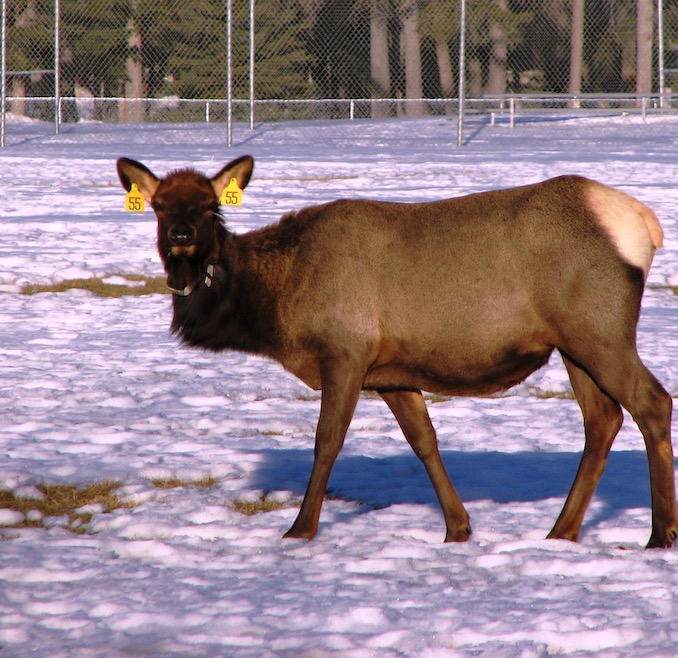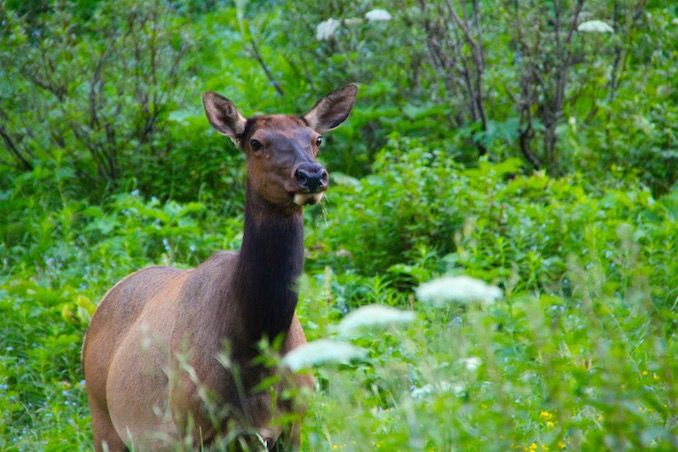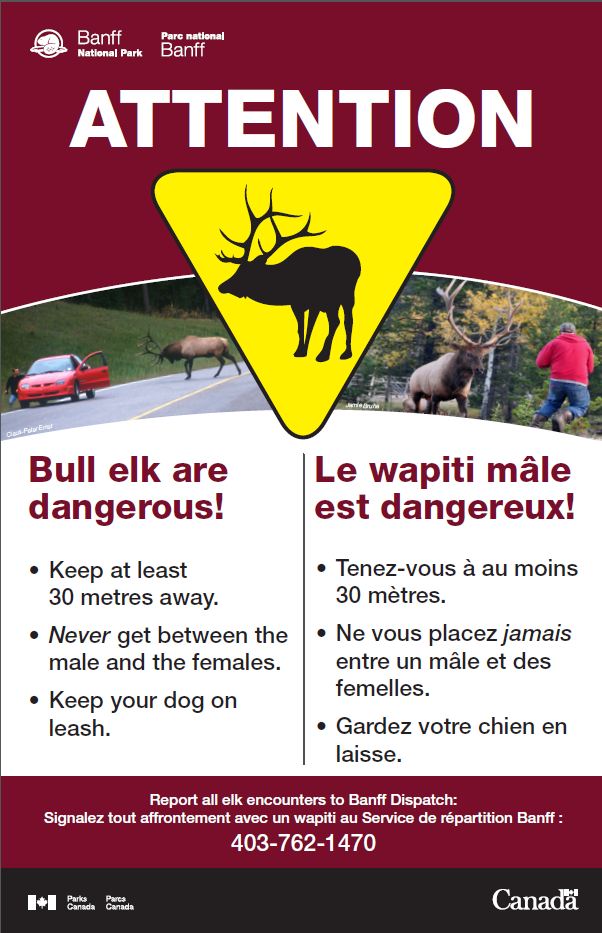The leaves are slowly starting to change colour, dawn and dusk now have a noticeable chill, and the first bugling of male elk has begun. Even though the official start is still a few days away, the telltale signs of autumn are upon us.

Elk, also known as Wapiti, are one of the largest members of the deer (ungulate) family. Bulls can weigh as much as 450 kilograms (1,000 pounds) and cows can top out at 270 kilograms (600 pounds). Throughout much of the year, these large mammals can appear docile, which leads some to believe these gentle giants aren’t dangerous. However, during rutting (mating) season, the bulls can be aggressive and unpredictable. Each fall federal (Parks Canada) and provincial (Alberta Parks) authorities remind folks to be cautious and alert when venturing into Elk country.

The unmistakable bugling of male Elk indicates that the rut has begun. The rut typically lasts from late August until the end of October. During this time, bulls are rounding up females in an attempt to breed with them. They are very protective of their harem and will challenge other bulls to protect what’s theirs. Even though we humans do not look like a bull Elk, we can be viewed as a competitor. Males have been known to charge humans or their dogs who get too close. This is exactly why we must exercise caution when recreating outdoors.

To prevent an unwanted encounter, people are encouraged to keep a minimum distance of 30 meters between themselves and Elk. Take the necessary precautions to ensure you never get between a male and his females, this includes parking your vehicle between them. Bulls have been known to charge vehicles, causing extensive damage. To Elk, dogs can resemble a predator, such as a wolf or coyote, so it’s always recommended to keep your pet leashed at all times. Travelling in groups, staying alert, and carrying bear spray (or pepper spray), can help prevent unwanted Elk encounters.

If you find yourself in the presence of a bull Elk, heed the following advice. Whenever possible, detour around Elk on the high side of a slope or uphill. If an Elk gets too close or appears to be acting aggressively, act dominant and raise your arms to make yourself appear larger than you are. Maintain eye contact and never turn your back or run. Back away slowly, leaving plenty of space for the Elk. Climbing a tree or keeping an object (tree, boulder, vehicle, building etc.) between yourself and the animal has also been proven to be effective in the event of a charge. If you’re knocked down, don’t play dead. You need to get up and attempt to move to cover or use an object as protection.

Once it’s safe to do so, report aggressive Elk behaviour to the proper authorities. In the Bow Valley and Kananaskis Country please call 403-591-7755. If you’re in Banff National Park the number is 403-762-1470. As always, if it’s an emergency call 911.
Autumn is one of the most spectacular times to visit the mountain parks. Just make sure you’re prepared and are practicing wildlife safety procedures while you’re there.

For additional information please refer to the Living With Wildlife pamphlet from Alberta Parks or the Living Smart With Wildlife brochure from WildSmart.




